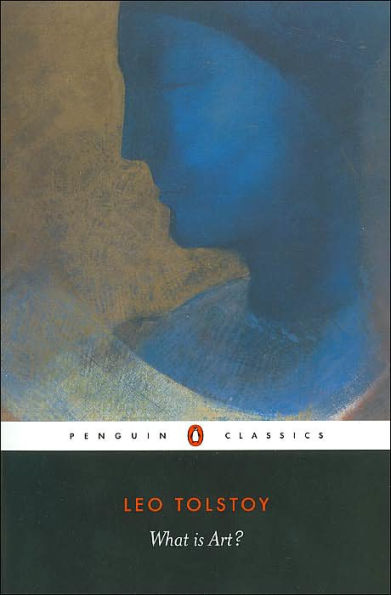This profound analysis of the nature of art is the culmination of a series of essays and polemics on issues of morality, social justice, and religion. Considering and rejecting the idea that art reveals and reinvents through beauty, Tolstoy perceives the question of the nature of art to be a religious one. Ultimately, he concludes, art must be a force for good, for the progress and improvement of mankind.
For more than seventy years, Penguin has been the leading publisher of classic literature in the English-speaking world. With more than 1,700 titles, Penguin Classics represents a global bookshelf of the best works throughout history and across genres and disciplines. Readers trust the series to provide authoritative texts enhanced by introductions and notes by distinguished scholars and contemporary authors, as well as up-to-date translations by award-winning translators.
This profound analysis of the nature of art is the culmination of a series of essays and polemics on issues of morality, social justice, and religion. Considering and rejecting the idea that art reveals and reinvents through beauty, Tolstoy perceives the question of the nature of art to be a religious one. Ultimately, he concludes, art must be a force for good, for the progress and improvement of mankind.
For more than seventy years, Penguin has been the leading publisher of classic literature in the English-speaking world. With more than 1,700 titles, Penguin Classics represents a global bookshelf of the best works throughout history and across genres and disciplines. Readers trust the series to provide authoritative texts enhanced by introductions and notes by distinguished scholars and contemporary authors, as well as up-to-date translations by award-winning translators.

What Is Art?
240
What Is Art?
240Related collections and offers

Product Details
| ISBN-13: | 9780140446425 |
|---|---|
| Publisher: | Penguin Publishing Group |
| Publication date: | 01/28/1996 |
| Series: | Classics Series |
| Pages: | 240 |
| Sales rank: | 64,045 |
| Product dimensions: | 5.10(w) x 7.80(h) x 0.60(d) |
| Age Range: | 18 Years |
About the Author
Customer Reviews
Explore More Items
At first glance, Three Lives seems to be three straightforward portraits of women living in the early twentieth century. “The Good Anna” describes an exacting German house servant;
In "Confession" Tolstoy poses the question: Is there any meaning in my life that will not be destroyed by my death?
In 1879 the fifty-year-old author of "War and Peace" and "Anna Karenina" came to
Now the subject of a major new film adaptation from director Joe Wright (Atonement, Pride and Prejudice), Leo Tolstoy's Anna Karenina is translated by award-winning duo Richard Pevear and Larissa
The prophets had promised that God should come into the world. After the prophets, John proclaimed that God was already in the world, and that to know him
The screenplay for Kubrick’s 1962 film tells the story of an older man’s obsession with a young girl.
